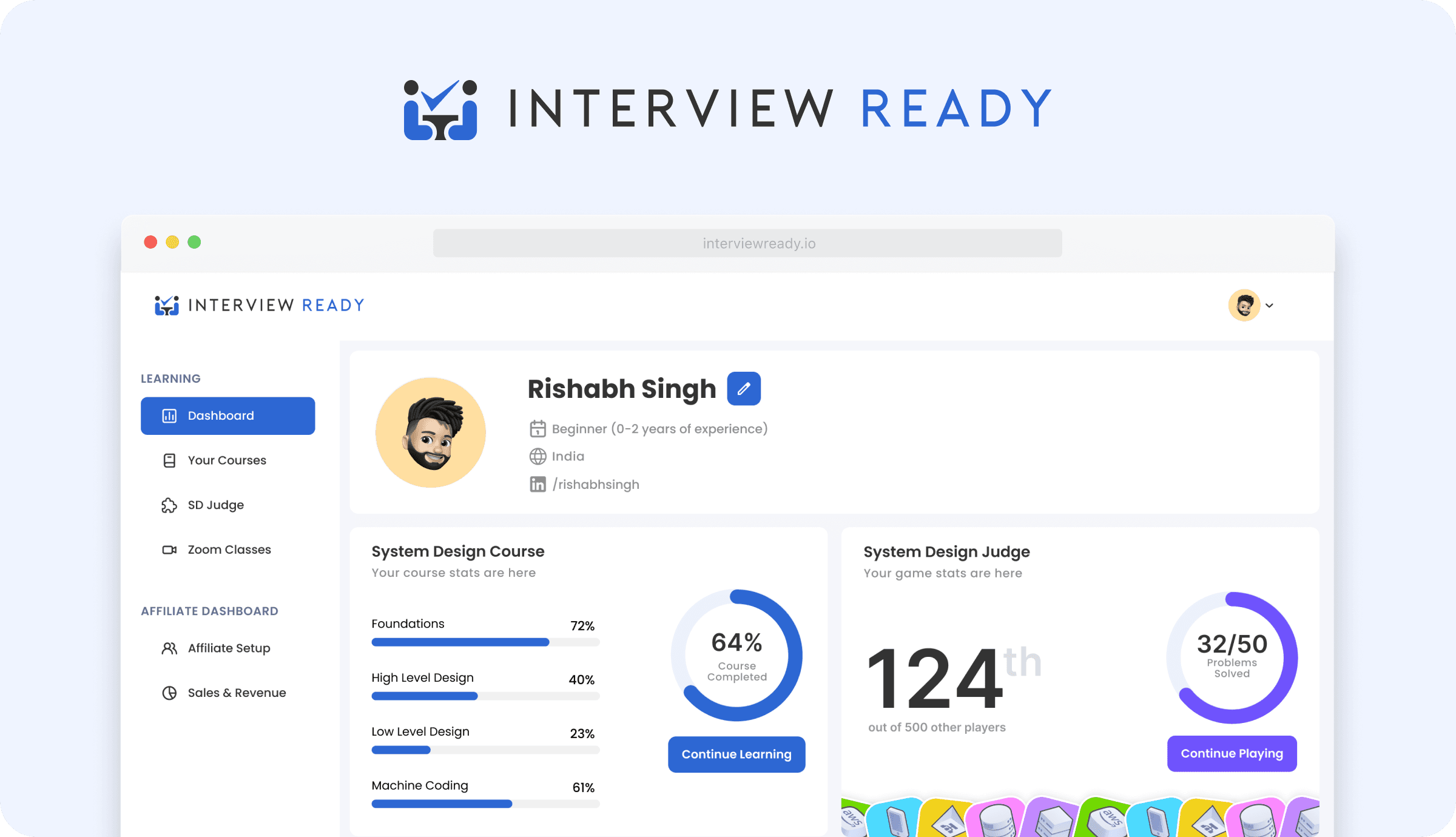Improving Course Completion Rates Through Habit Formation
InterviewReady
timeline
12 Weeks
tools
Figma
Google Analytics
MS Clarity
Internal Company Dashboard
MY ROLE
Product Designer
results
Course completion rates increased by 47%
Average daily active users up by 68%
User engagement time increased by 2.3x
Learning streak retention improved by 89%
skills & Methods
User Research & Interviews
Quantitative Data Analysis
UX Design
Product Strategy
Behavioral Psychology
Gamification Design
Overview
Interview Ready is an interview preparation platform that helps professionals prepare for technical interviews through structured online courses. This case study focuses on addressing the critical challenge of low course completion rates through strategic UX improvements and behavioral design principles.
Problem
Despite high initial purchase rates, Interview Ready's courses suffered from low completion rates, with only 23% of users completing their purchased courses. This indicated a significant gap between user intent and actual engagement, impacting both user success and business metrics.
77% drop-off rate before course completion
45% of users never returned after first day
82% of drop-offs occurred after video completion
Average engagement time: 15 minutes/session
68% of users cited "lack of time" as primary barrier
Solution
We implemented a three-pronged approach focusing on habit formation, gamification, and structured learning schedules. This strategy aimed to transform sporadic learning patterns into consistent engagement through behavioral design principles.
Defining the Problem
Users demonstrate high initial motivation by purchasing courses but struggle to maintain consistent engagement due to time management challenges and lack of structured accountability.
Opportunity
The gap between user intent and action presented an opportunity to implement behavioral design patterns that could bridge this divide, focusing specifically on habit formation and sustained engagement.
Hypothesis
By implementing a combination of habit formation techniques and gamification elements, we can increase course completion rates by 40% within three months of launch.
Research
Conducted 25 user interviews
Analyzed engagement data from 10,000 active users
Performed competitive analysis of 5 leading learning platforms
Created engagement heat maps
Conducted drop-off analysis
Persona
Sarah, 28, Software Engineer
50+ hour work week
Preparing for senior role interviews
Struggles with consistent study schedule
Values structured learning but needs flexibility
Marcus, 31, Career Switcher
Learning coding while working full-time
Needs confidence-building elements
Requires clear progression markers
Prefers bite-sized learning sessions
The Final Solution
1. Enhanced Course Flow
Implemented smart end-screens with personalized recommendations
Integrated Netflix-style autoplay with 6-second decision window
Added contextual practice sessions after every module

2. Gamification System
Introduced daily learning streaks
Created shareable achievement badges
Implemented progress visualization

3. Study Time Management
Developed calendar integration for study sessions
Created smart reminder system
Implemented flexible scheduling options

Success Metrics
Aftermath & Retrospective
Learnings
Small, consistent engagement is more effective than longer, sporadic sessions
Gamification elements must serve the learning objective, not overshadow it
Calendar integration was surprisingly impactful for habit formation
User-set schedules had higher adherence than system-suggested ones
Next Steps
Implement social learning features
Study groups
Peer accountability systems
Community challenges
Enhanced Personalization
AI-driven learning paths
Adaptive difficulty levels
Personalized practice recommendations
Mobile Experience
Offline learning capabilities
Push notification optimization
Mobile-first practice exercises











